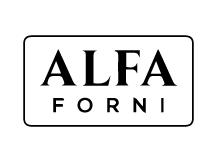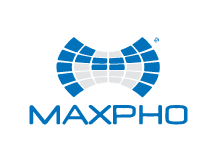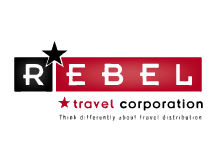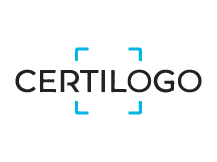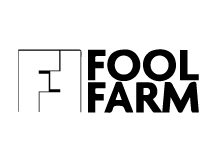In today’s fast-paced digital world, businesses face an increasingly competitive landscape. With customers bombarded by countless messages daily, breaking through the noise has become a formidable challenge. Traditional marketing methods no longer suffice, and creative teams must constantly innovate to capture attention, engage audiences, and foster lasting connections. The fusion of marketing and creativity is more critical than ever, requiring fresh ideas, novel approaches, and a willingness to embrace new technologies.
Content Saturation
With the rise of social media, content marketing, and influencer campaigns, the volume of content available to consumers has exploded. The average consumer now has access to an overwhelming amount of information, leading to content fatigue. Marketers are tasked with standing out in a sea of similar messages, where consumers scroll past ads, articles, and posts in seconds.
Decreasing Attention Spans
With the proliferation of short-form content and instant gratification offered by platforms like TikTok and Instagram, attention spans are shrinking. Brands now have just a few seconds to capture a viewer's attention before they move on to something else. Long-form content and slow-burn strategies may not be as effective in grabbing and holding attention as they once were.
Creative Stagnation
Many teams face the challenge of hitting creative roadblocks, where ideas start to feel repetitive, and campaigns lack innovation. This stagnation can stem from a reluctance to take risks or from relying too heavily on what worked in the past. Without pushing creative boundaries, brands risk becoming predictable and unmemorable.
Budget and Resource Constraints
Not all marketing teams have access to large budgets or cutting-edge resources, which can limit creativity. Tight deadlines, limited staff, or inadequate tools can stifle the ability to think outside the box and execute bold ideas. The need to balance creativity with cost-efficiency can lead to compromises in quality or scope.
Changing Consumer Behavior
Consumer preferences evolve rapidly, with trends rising and fading at lightning speed. Keeping up with shifts in platform usage, purchasing behaviors, and cultural trends is a significant challenge. Marketers need to continuously adapt their strategies to remain relevant to their target audiences while staying ahead of the curve.
Embrace Data-Driven Creativity
Combining creativity with data-driven insights is a powerful way to develop compelling campaigns. Using analytics to understand customer behavior, preferences, and engagement patterns allows marketers to tailor content that resonates more deeply with their audience. A data-informed approach doesn’t stifle creativity; instead, it enhances it by providing a solid foundation to build innovative ideas upon. For example, analyzing what types of content get the most shares or which visuals capture the most attention can guide creative teams in developing more relevant campaigns. Personalization, powered by data, is another way to cut through the noise and provide content that feels meaningful and specific to the audience.
Leverage Emerging Technologies
Game developers are leveraging photorealistic AI-generated content to build expansive virtual worlds with minimal manual effort. AI can generate landscapes, characters, and objects that fit seamlessly into the game environment, saving time on design while maintaining a high level of realism. This also opens up possibilities for games where environments can evolve dynamically based on user interactions, a feat that would be resource-intensive without AI.
Take Risks and Be Bold
To break free from creative stagnation, marketing teams need to be willing to take risks. Whether it’s experimenting with a new visual style, using unconventional messaging, or collaborating with unexpected influencers, bold moves can lead to breakthrough moments. While not every risk will pay off, failure is part of the creative process. Brands that are afraid to venture beyond the familiar often get left behind. Some of the most memorable campaigns have succeeded because they defied expectations and took creative risks. It’s about being fearless and embracing new perspectives, even if it means stepping outside of your comfort zone.
Focus on Storytelling
In an age of information overload, storytelling remains one of the most effective ways to engage and connect with audiences. People are wired to respond to stories, and brands that can tell authentic, emotionally resonant stories will leave a lasting impression. A great story transcends platforms and formats, whether told through video, social media, or experiential marketing. Brands like Nike and Apple have consistently used storytelling to connect with their audiences, crafting narratives that speak to values, aspirations, and emotions. Developing a strong brand narrative creates a deeper connection with consumers and makes your content more relatable.
Adapt to Changing Platforms
Staying agile and adapting quickly to changes in consumer behavior is essential to staying relevant. Marketers need to stay attuned to shifts in platform usage, such as the rise of new social media apps, changes in algorithm behavior, or emerging content formats. Keeping a pulse on these changes enables brands to meet consumers where they are, rather than sticking to outdated strategies. For example, the growth of short-form video content has reshaped how brands communicate. Platforms like TikTok and Instagram Reels prioritize snackable, quick-hitting videos, and marketers must adjust their content strategies accordingly to capture the fleeting attention of users.
Breaking through creative barriers often requires collaboration between diverse teams and perspectives. When creative professionals, data analysts, strategists, and technologists work together, the synergy can spark unique ideas. Encouraging cross-functional collaboration helps bring new insights to the table and often leads to more well-rounded, innovative campaigns. Creativity thrives on diversity of thought, and leveraging various viewpoints can open up exciting new possibilities for marketing strategies.
Breaking through marketing and creative barriers is an ongoing challenge, but one that presents endless opportunities for innovation. By embracing data, experimenting with new technologies, pushing creative boundaries, and adapting to changes in consumer behavior, marketers and creatives can rise above the noise and make meaningful connections with their audiences. The key is to remain agile, take calculated risks, and continuously seek new ways to tell stories that matter. In today’s saturated marketplace, it’s the brands that dare to be different that will make the biggest impact.
Unites States, United Kingdom, UAE, Italy, Netherlands, Canada and more...
